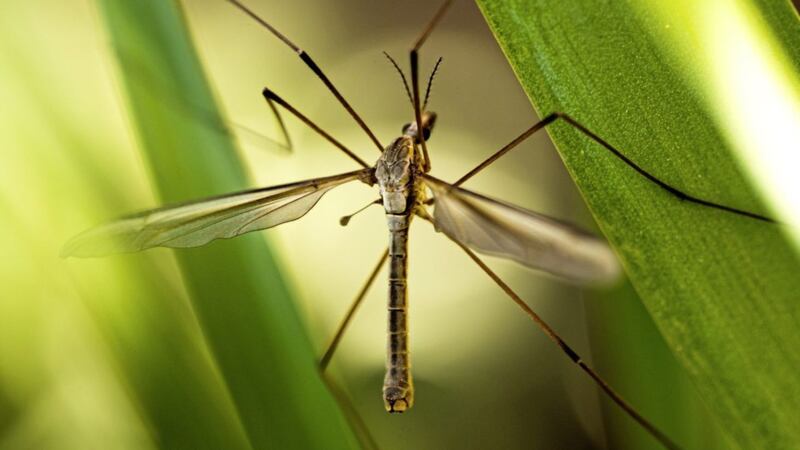AS THE days shorten and evenings close in, some uninvited guests begin to enter our houses through open doors and windows, lured by the warm glow of electric light.
One, I find mildly annoying but also intriguing at this time, is the clumsy daddy long-legs, which flounders around, knocking into light shades and other objects, as it evades attempts at capture, like the one Christy Moore sings of in the song The Reel in the Flickering Light, which "jumpet sprite, As he danced to the reel in the flickering light/On his thin and wispy spindles".
Although totally harmless, its distinctive gangly appearance has fascinated many and frightened others for years, with some believing it to be a venomous spider, a myth based around the naming of multiple organisms as ‘daddy long-legs’, only one of which is actually a spider, the inoffensive long-bodied cellar spider.
Another closely related species also under the name of ‘daddy long-legs’ is the harvestman but the most common ‘daddy long-legs’ known to us in Ireland, is the European cranefly, Tipulidae paludosa, a member of the insect family and not a spider.
It doesn’t bite or sting and by the time we see it in the house, it is flopping about looking for a mate, with only a few days to live.
The adult has a long brown body, with translucent wings and very fine long legs, which easily fall off if handled. The male’s square-ended body differs from the female’s sharper body end with its sting-like tail or ovipositor, used to deliver eggs into the September earth, which will hatch after a few weeks. The brevity of its airborne life, as with most larval insects, seems strangely unjust and unfair given the long months of preparation and development in the soil.
It is at this larval, or ‘leatherjacket’ stage, so named because of their tough skin, when they become a real nuisance as the brownish-grey grubs munch their way through the roots of grass and crops for months, especially during the following spring, to leave stunted growth and even bare patches in the case of lawns. Later they will pupate and emerge as winged adults in the summer, ready for the cycle to begin again.
A widespread insect, the daddy long-legs is found in a variety of habitats from grassland to gardens, as well as near lakes and rivers. In two of its Irish names, snáthaid an phúca, and snáthaid an diabhail, snáthaid means needle or pointer, a likely reference to its spindly legs or needle-like frame, while an phúca means the ghost or goblin and an diabhail, the devil. Both probably allude to the insect’s fearsome but misplaced reputation in the past.
Some myths and folklore linked to one of the other species named ‘daddy long-legs’, the ‘harvestman’ go back to the 1600s when it was thought by English farmers that each one possessed a scythe which would help them harvest their crops and, that if it was held by all its legs but one, the free leg would point in the direction of lost livestock. Not surprising then, that killing a harvestman was considered bad luck.
A version of an Old Father Long-legs nursery rhyme from Washington, found in The Journal of American Folklore (1917) goes:
Daddy, daddy long-legs ?Couldn't say his prayers; ?Took him by the left leg ?And threw him downstairs.
If you come across paludosa in your house any night soon, don’t do as uttered in the rhyme; gift him or her instead to the care of the night sky and another chance to find a friend.








